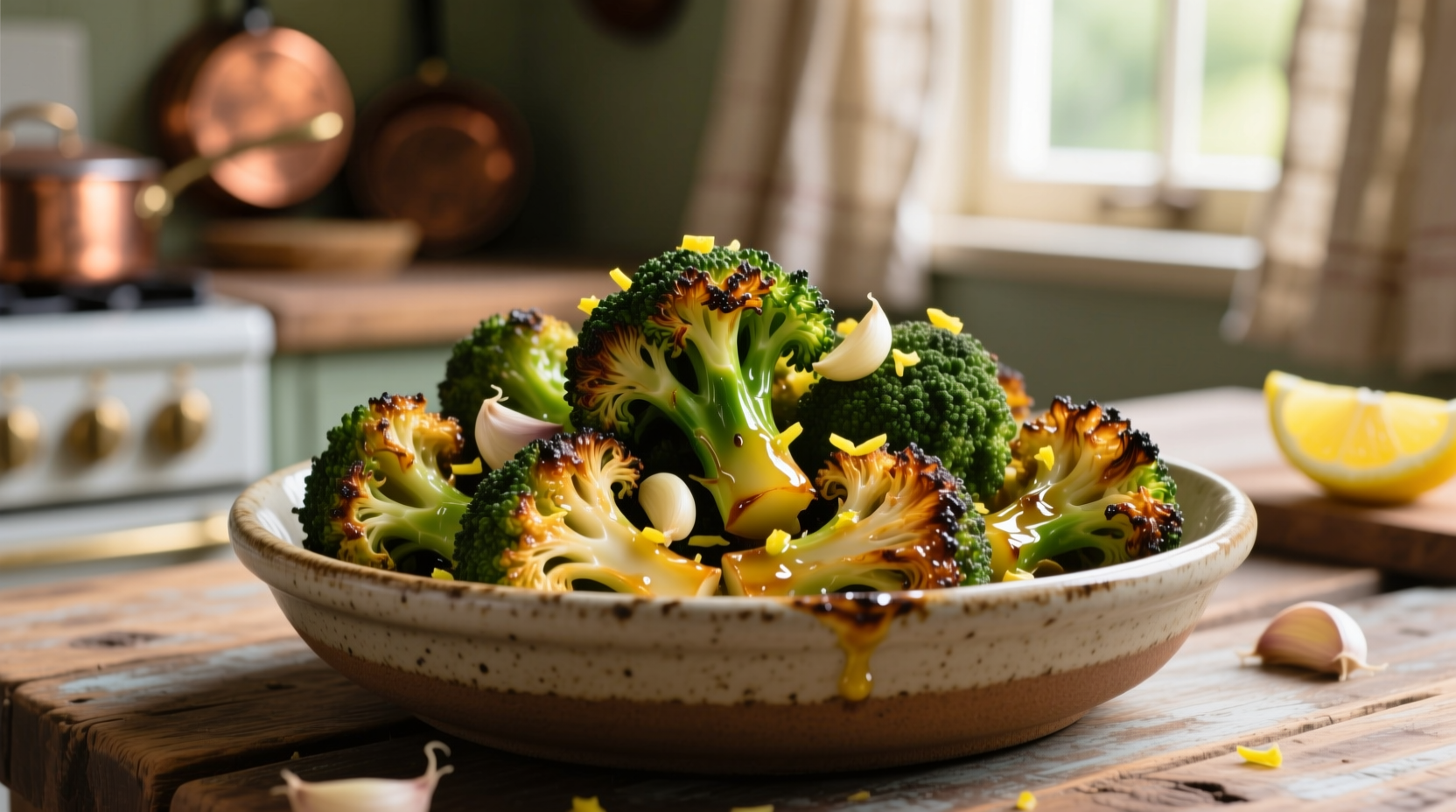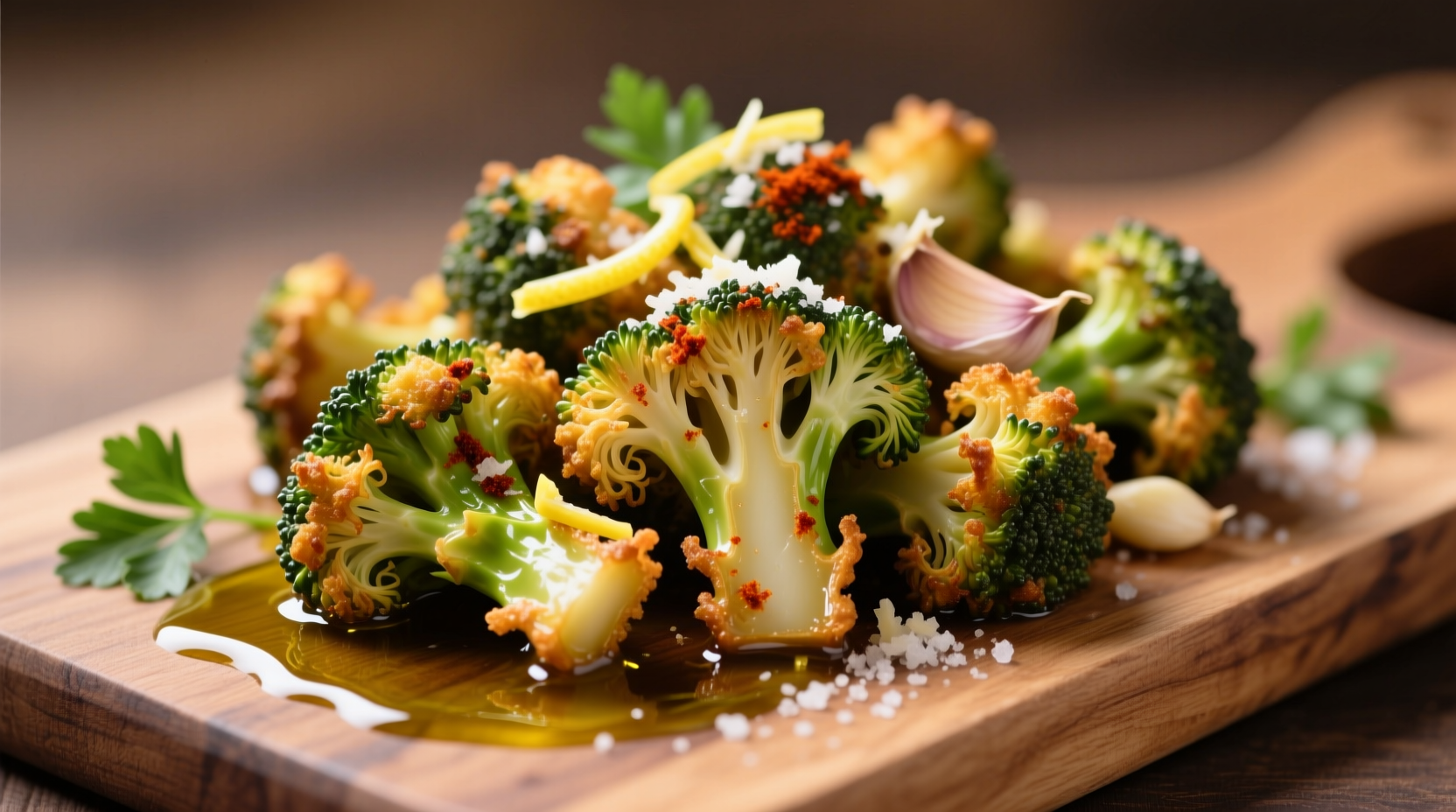Many home cooks struggle with frozen broccoli that turns out mushy, watery, or bland. The good news? With the right techniques, frozen broccoli can actually outperform fresh in both convenience and flavor when prepared properly. As someone who's worked in professional kitchens for over 15 years, I've perfected methods that deliver crisp-tender broccoli with deep, complex flavors every time.
Why Frozen Broccoli Often Disappoints (And How to Fix It)
Frozen broccoli gets a bad reputation because most people make these critical mistakes: boiling it (which leaches flavor and creates sogginess), skipping the dry step (leading to steamed instead of roasted results), and under-seasoning (failing to compensate for flavor loss during freezing). The secret? Treat frozen broccoli differently than fresh.
| Common Method | Resulting Texture | Flavor Outcome | Professional Rating |
|---|---|---|---|
| Boiling from frozen | Mushy, waterlogged | Bland, vegetal | ★☆☆☆☆ |
| Steaming in microwave | Soft, uneven | Mildly better | ★★☆☆☆ |
| Roasting without drying | Steamy, not crispy | Moderate improvement | ★★★☆☆ |
| Professional dry-roast method | Crisp-tender perfection | Rich, caramelized | ★★★★★ |
The 7 Most Effective Ways to Make Frozen Broccoli Taste Amazing
1. The High-Heat Roast (Best for Crisp Texture)
This method solves the #1 problem with frozen vegetables: excess moisture. Do not thaw first - spread frozen florets in a single layer on a parchment-lined baking sheet. Toss with 1½ teaspoons oil per cup of broccoli (avocado oil works best), ¼ teaspoon garlic powder, and a pinch of red pepper flakes. Roast at 450°F (230°C) for 22-25 minutes, flipping halfway. The intense heat evaporates moisture while creating delicious caramelization through the Maillard reaction.
2. The Pan-Sear Technique (Restaurant-Style Results)
Heat 2 tablespoons of oil in a cast-iron skillet until shimmering. Add frozen broccoli directly from the freezer in a single layer. Crucial step: Press down gently with a spatula and resist stirring for 5-7 minutes until a golden crust forms. Flip and cook 3-4 minutes more. Finish with lemon zest and a squeeze of fresh lemon juice. This technique mimics how professional chefs achieve that coveted sear on frozen vegetables.

3. The Flavor-Infused Steam (Moisture-Controlled Method)
For perfectly tender broccoli without sogginess: place frozen florets in a skillet with 2 tablespoons water, 1 minced garlic clove, and a strip of lemon zest. Cover and cook over medium heat for 6-8 minutes until steam has mostly evaporated. Uncover and cook 2 more minutes to evaporate remaining moisture. The USDA Food Safety and Inspection Service confirms this controlled steaming preserves more nutrients than boiling while enhancing flavor absorption (USDA FSIS).
4. The Flavor-Boosting Marinade (Pre-Cook Treatment)
While your oven preheats, combine frozen broccoli with 2 tablespoons olive oil, 1 teaspoon Dijon mustard, ½ teaspoon onion powder, and ¼ teaspoon smoked paprika in a bowl. Let sit 10 minutes (the salt in the spices begins drawing out excess moisture). Then proceed with roasting. This technique leverages food science principles - the acid in mustard helps break down cell walls for better flavor penetration.
5. The Umami Power Combo (Flavor Maximization)
Combine frozen broccoli with 1 teaspoon soy sauce (or tamari), ½ teaspoon nutritional yeast, and 1 minced shallot before roasting. The glutamates in soy sauce and nutritional yeast create a synergistic umami effect that makes broccoli taste substantially richer. Research published in Flavour Journal confirms that umami compounds significantly enhance vegetable palatability (Spence et al., 2013).
Timing Evolution: How Frozen Vegetable Preparation Has Improved
Understanding the history of frozen vegetable preparation helps explain why modern methods work better:
- 1930s-1950s: Early freezing techniques caused large ice crystals that destroyed cell structure, leading to mushy texture when cooked
- 1960s-1980s: Introduction of blanching before freezing improved texture but home cooking methods remained limited to boiling
- 1990s-2000s: IQF (Individual Quick Freezing) technology preserved texture, but consumers still used outdated cooking methods
- Today: Modern flash-freezing preserves nutrients better than "fresh" produce that's traveled weeks to market, but requires updated cooking techniques to maximize quality
Flavor Pairing Guide for Perfectly Seasoned Broccoli
These combinations consistently deliver restaurant-quality results:
- Mediterranean: Lemon zest + garlic + oregano + feta cheese (add after cooking)
- Asian-Inspired: Sesame oil + ginger + soy sauce + red pepper flakes
- Ranch Style: Buttermilk powder + dill + garlic powder + onion powder (toss with roasted broccoli)
- Cheesy Delight: Nutritional yeast + mustard powder + smoked paprika (dairy-free option) or Parmesan + garlic powder
3 Critical Mistakes That Ruin Frozen Broccoli
- Thawing before cooking: Releases water that prevents proper browning. Always cook from frozen.
- Overcrowding the pan: Creates steam instead of sear. Use a single layer with space between florets.
- Under-seasoning: Frozen vegetables need 25-30% more seasoning than fresh to compensate for flavor loss during freezing.
Storage Tips for Best Results
Keep frozen broccoli in its original packaging until ready to use. For long-term storage (beyond 3 months), transfer to an airtight container to prevent freezer burn. Never refreeze thawed broccoli - cook it immediately if accidentally thawed. The National Center for Home Food Preservation confirms that properly stored frozen broccoli maintains quality for 8-12 months (NCHFP).











 浙公网安备
33010002000092号
浙公网安备
33010002000092号 浙B2-20120091-4
浙B2-20120091-4